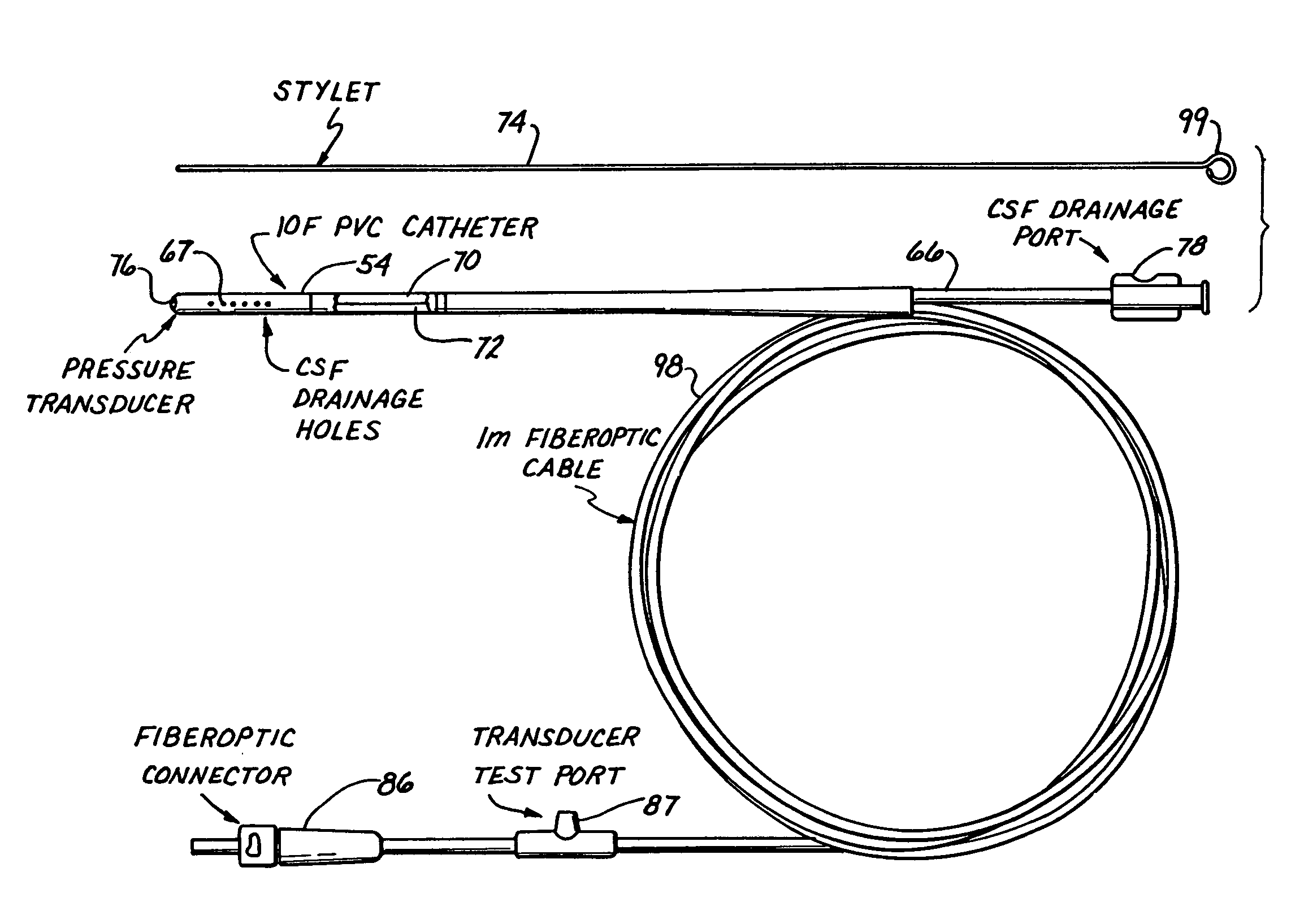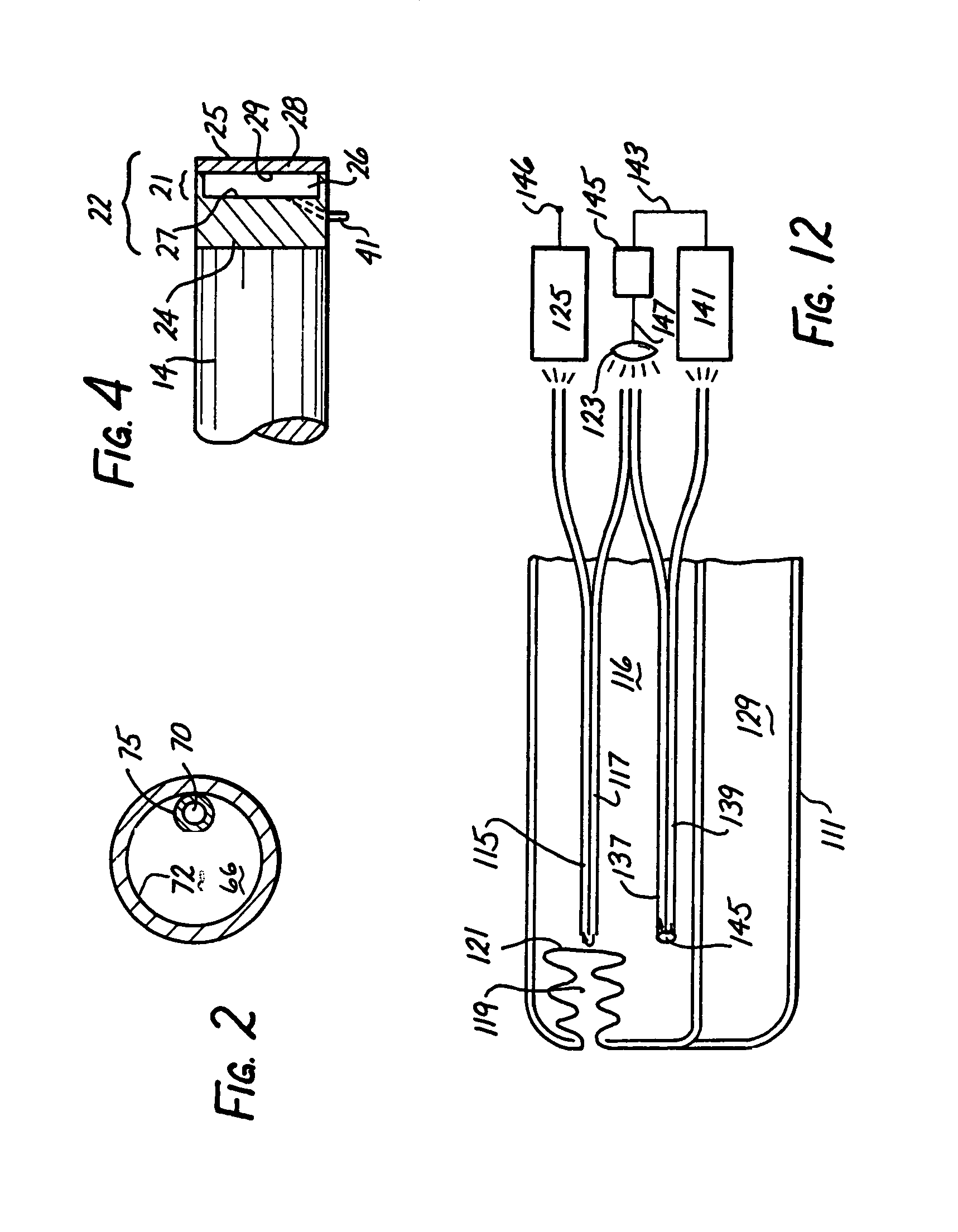Intracranial pressure monitor and drainage catheter assembly
a technology of intracranial pressure monitor and catheter assembly, which is applied in the direction of catheters, instruments, applications, etc., can solve the problems of affecting the flow of blood
- Summary
- Abstract
- Description
- Claims
- Application Information
AI Technical Summary
Benefits of technology
Problems solved by technology
Method used
Image
Examples
Embodiment Construction
[0049]In the preferred embodiment, the catheter is a dual lumen catheter adapted for insertion into the ventricular and / or parenchymal spaces of the brain of humans and other mammals for measuring intracranial pressure and for simultaneously draining cerebrospinal fluids. As shown in FIG. 1, the catheter comprises catheter housing 54, which encloses first lumen 70 and optional second lumen 72.
[0050]Catheter housing 54 is an elongate flexible tube closed at the distal end, except for sensor aperture 76, to facilitate insertion of the catheter into the environment whose pressure is to be monitored. Sensor aperture 76 opens into the distal end of first lumen 70 and provides external fluid access to the pressure sensor.
[0051]Usually catheter housing 54 is extruded from a biocompatible plastic material, preferably silicone rubber. Catheter housing 54 is elongate, flexible and sized to be passed through a borehole in the skull and received within the brain.
[0052]First lumen 70 extends con...
PUM
 Login to View More
Login to View More Abstract
Description
Claims
Application Information
 Login to View More
Login to View More - R&D
- Intellectual Property
- Life Sciences
- Materials
- Tech Scout
- Unparalleled Data Quality
- Higher Quality Content
- 60% Fewer Hallucinations
Browse by: Latest US Patents, China's latest patents, Technical Efficacy Thesaurus, Application Domain, Technology Topic, Popular Technical Reports.
© 2025 PatSnap. All rights reserved.Legal|Privacy policy|Modern Slavery Act Transparency Statement|Sitemap|About US| Contact US: help@patsnap.com



